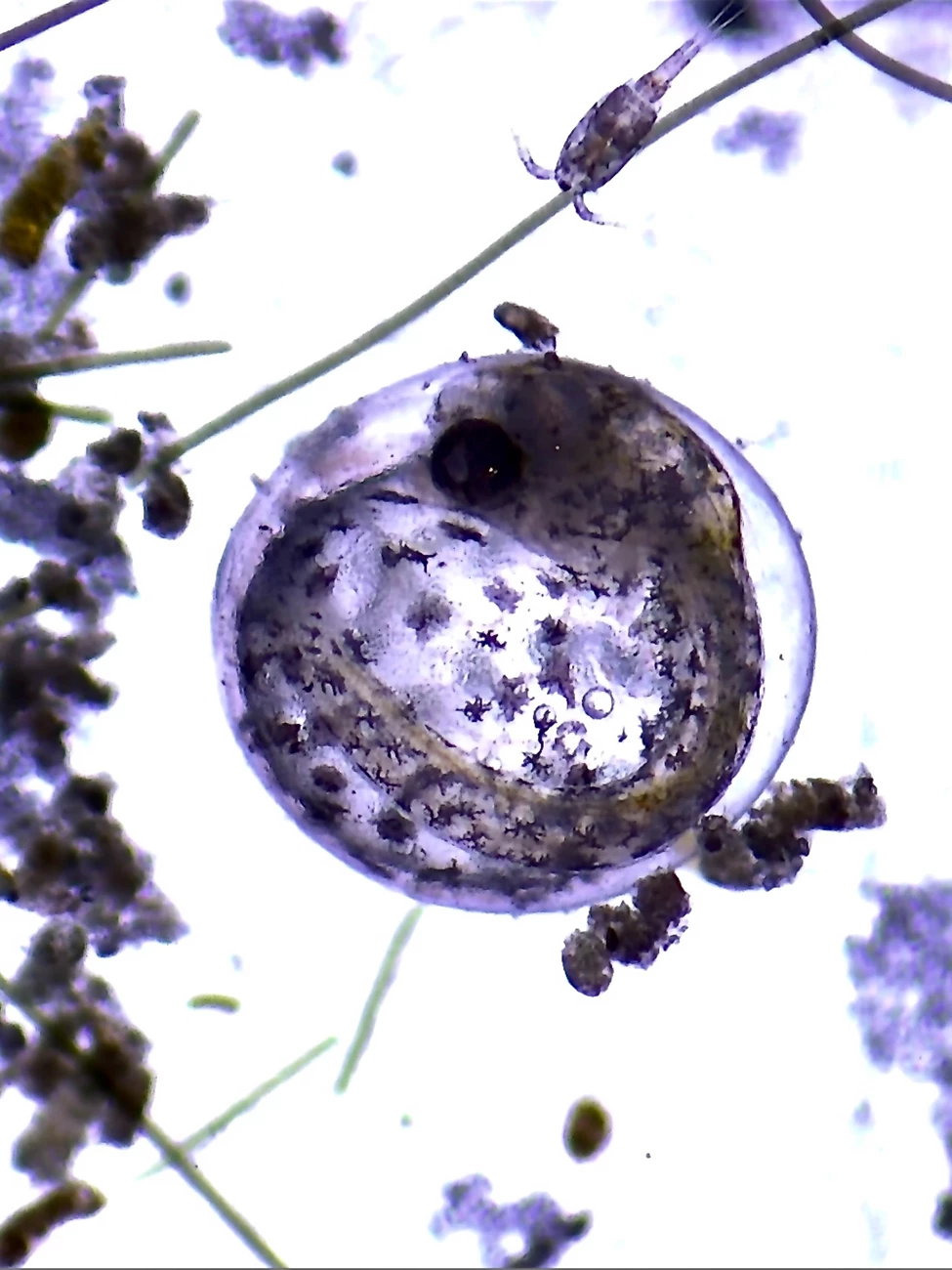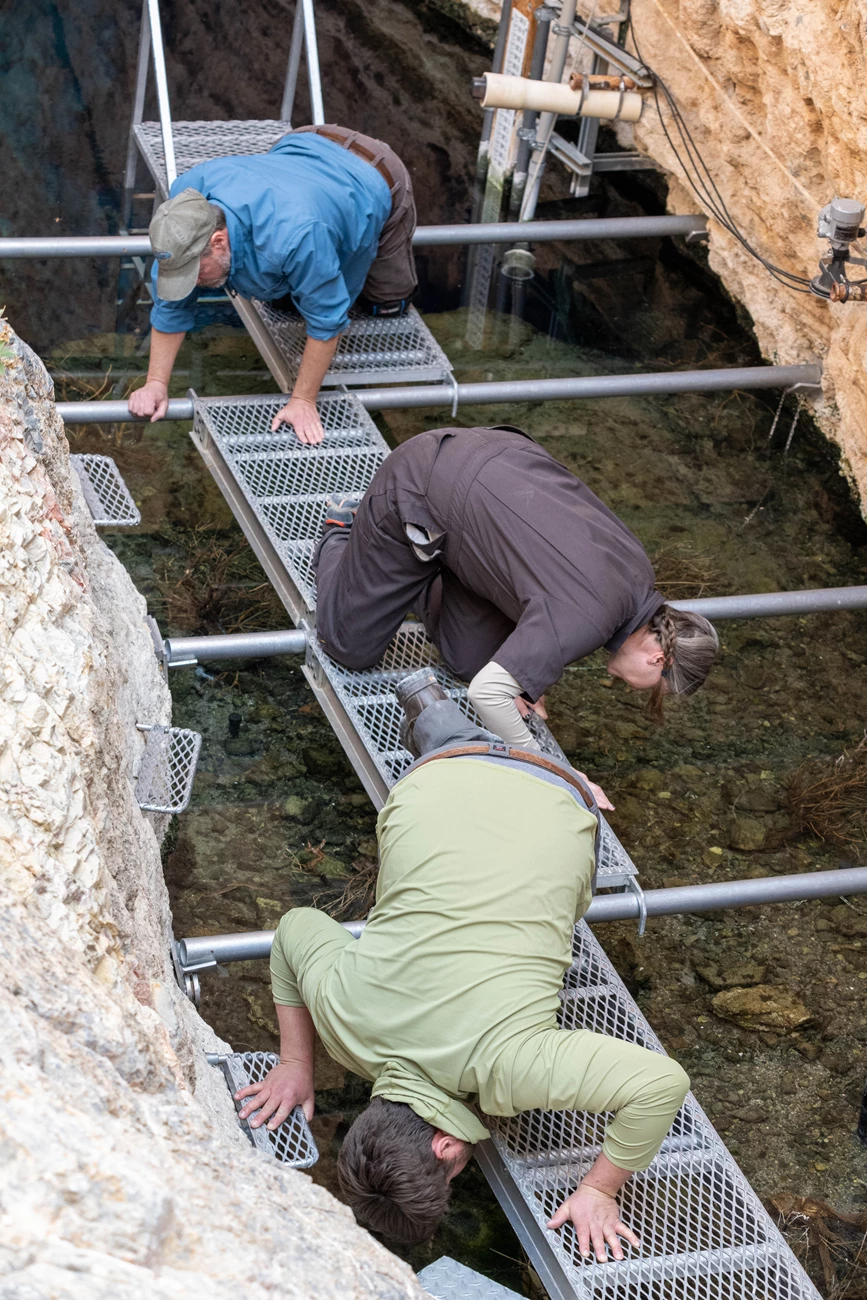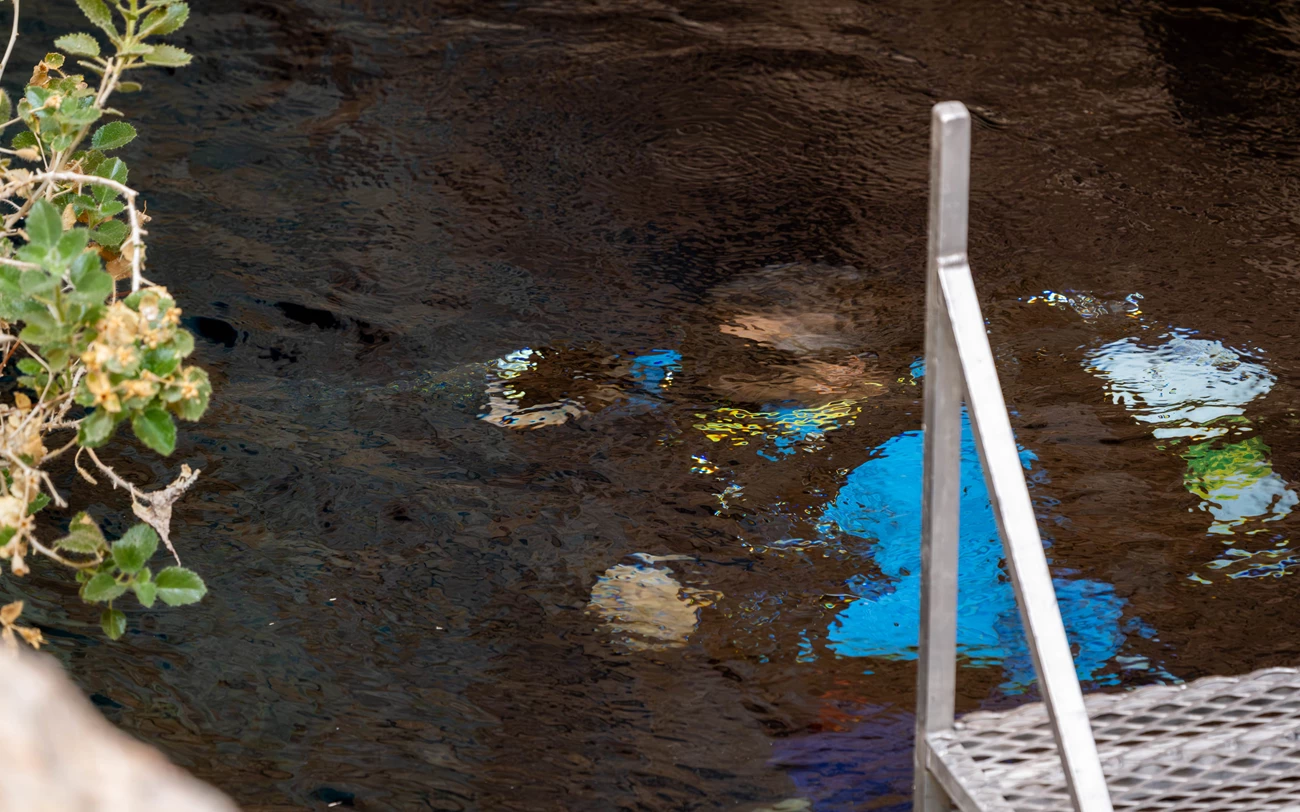News Release

USFWS / Olin Feuerbacher
|
Subscribe
|
Contact: Abby Wines (National Park Service), 760-786-3221
Contact: Miguelina Portorreal (U.S. Fish and Wildlife Service)
Contact: Brandon Senger (NV Dept. of Wildlife), 702-668-3999
DEATH VALLEY, Calif. – Following a sudden population decline caused by two recent earthquakes, one of the world’s rarest fish – the Devils Hole pupfish – is on the path to recovery, according to a multi-agency team of biologists.
During a semiannual survey this spring, biologists from the National Park Service (NPS), U.S. Fish and Wildlife Service (USFWS), and the Nevada Department of Wildlife counted only 38 fish in the deep limestone cavern in Death Valley National Park where they live.
In contrast, the official spring count one year earlier recorded 191 fish.
Two earthquakes – one in December and the other in February – triggered waves in Devils Hole’s normally still waters that moved algae, organic material, and fish eggs off a shallow shelf at the cavern’s entrance that provides critical food and spawning habitat for the fish.
Biologists consulted the 2022 Devils Hole Pupfish Strategic Plan, which includes plans on what to do in this situation, and for the first time added captive-raised fish – 19 of them – to the wild population. They also used data from the captive Devils Hole pupfish population at the USFWS Ash Meadows Fish Conservation Facility and the NPS Devils Hole monitoring program to decide how to supplement the fish’s diet until algae can regrow.
“I’m proud of the work of this interagency team to monitor and protect the Devils Hole pupfish,” said Death Valley National Park Superintendent Mike Reynolds. “The historic transfer of captive-raised fish from the backup population in Ash Meadows Fish Conservation Facility underscores the importance of the dedicated staff and their state-of the-art equipment.”
Biologists have been counting Devils Hole pupfish nearly every spring and fall since 1972. The team splits up to count fish simultaneously from the surface and by SCUBA diving into the cavern.
During the spring surveys, over 200 fish were counted up until the mid 1990s. In the early 2000s, an average of 90 fish were counted each spring. The number suddenly declined to 35 fish in 2013.
Population numbers climbed in recent years and reached a 25-year-high during the spring of 2024.
Michael Schwemm, senior fish biologist for USFWS, notes that swings in population numbers are characteristic of both the species and pupfish in general.
“The present size at near-record lows deserves our serious attention, and the actions in the strategic plan, including supplemental feeding and population augmentation, provide the best opportunity for recovery,” Schwemm said.
The team of biologists had prepared for a potential population decline for years. Pupfish eggs from Devils Hole have been collected regularly to establish the captive population at the Ash Meadows Fish Conservation Facility. The purposes of this population are to ensure that species does not become extinct and to serve as a source of fish for Devils Hole should that become necessary.
Biologists are optimistic about the future of Devils Hole pupfish because spawning behavior, viable eggs, and larval fish are at normal-to-high levels during the current spring breeding season. Ecosystem monitoring suggests that habitat conditions are improving, and most importantly, natural food sources are recovering as sunlight returns with spring.
“The fish were in good body condition and active throughout Devils Hole,” said NDOW Supervising Fisheries Biologist Brandon Senger. “Seeing fish exhibiting spawning behavior was really encouraging, as was the increase in algal growth.”
The next pupfish count will occur in the fall of 2025.
# # #
Death Valley National Park is the homeland of the Timbisha Shoshone and preserves natural resources, cultural resources, exceptional wilderness, scenery, and learning experiences within the nation’s largest conserved desert landscape and some of the most extreme climate and topographic conditions on the planet. Learn more at www.nps.gov/deva.

USFWS / Olin Feuebacher
Open Transcript Open Descriptive Transcript
Transcript
Videos audio has no proper spoken work, rather it has sounds of water sloshing characterized by being muffled as it is filmed underwater.
Descriptive Transcript
A variety of underwater clips stitched together show the release of small fish from a container to a natural environment. The video starts above water and then the camera dips below the surface showing fish swimming in a clear container separated from the surrounding body of water. The camera pans along the side of the container showing all of the fish inside. Hands holding the container break into the water slowly turning the container to release the fish into the natural environment. The fish immediately swim to the bottom of the environment hiding amongst rocks.
- Duration:
- 1 minute, 13 seconds
Underwater video showing the release of fish raised at AMFCF (Ash Meadows Fish Conservation Facility) into Devils Hole
Transcript
This video has no sound.
- Duration:
- 9 minutes, 55 seconds
Video of waves in Devils Hole caused by a 7.0 earthquake two minutes earlier off the coast of northern California (500 miles away). Biggest waves are about 6:30 minutes into the video. No audio on the video.
Transcript
This video has no sound.
- Duration:
- 49 minutes, 25 seconds
Devils Hole underwater camera during seiche 2024-12-05.mp4 Biggest waves are around 1:00-2:30 in the video No audio.

USFWS / Olin Feuerbacher

USFWS / Olin Feuerbacher

USFWS / Olin Feuerbacher

USFWS / Olin Feuerbacher
Last updated: April 15, 2025
